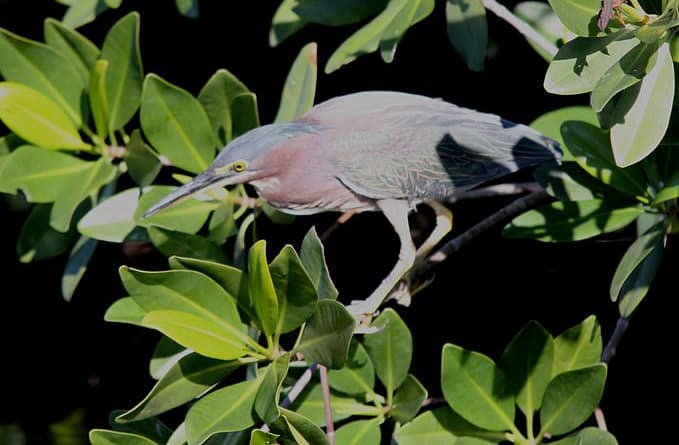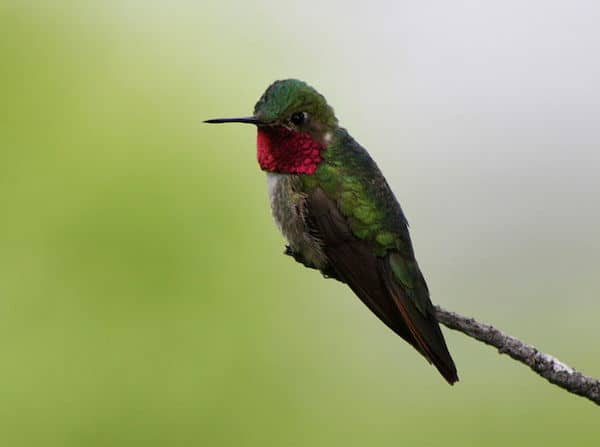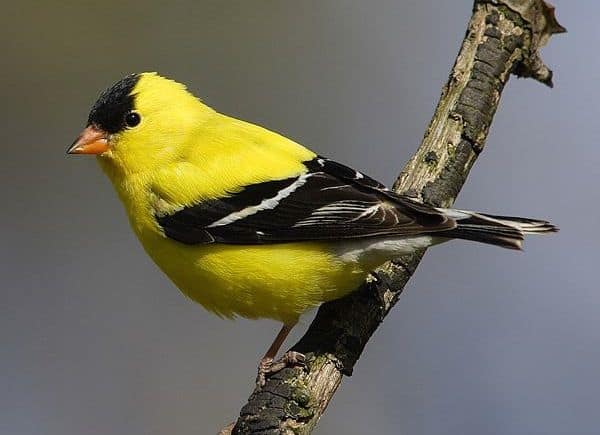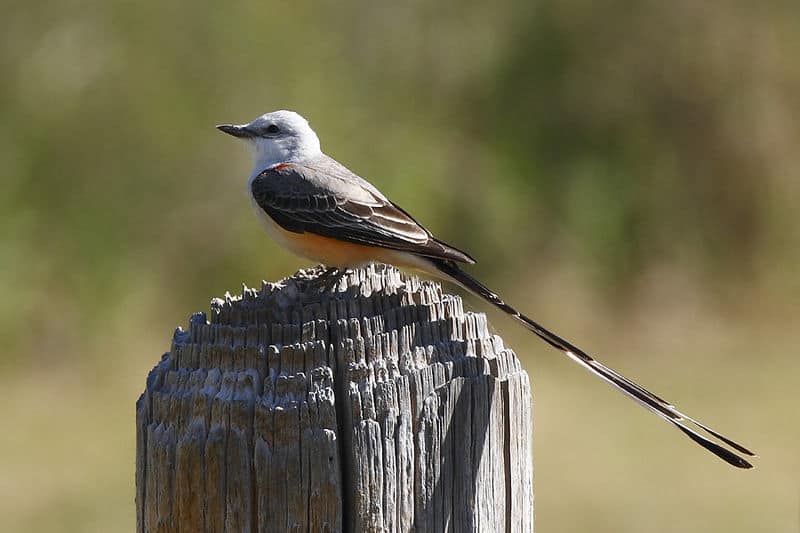The green heron isn’t exactly green, but it’s the most greenish of the North American herons. Perhaps a better name would have been “squat heron” or “little heron” or “common pond heron.” The least bittern is our smallest heron, but the green heron is the smallest easily seen heron.
While a green heron will sometimes stretch its neck out to peer at approaching birders or predators, its head is usually held close to the body, giving the bird a squat look. Identification of adults is straightforward: The back and crown are blackish with a green tinge, the neck and face are dark chestnut, and the belly is gray.
Yellow legs flush to bright orange during breeding season. Young birds are brown streaked, and care should be taken not to mistake them for bitterns. Subadults are a mixture of brown and streaky and rusty necked.
Listen for
The piercing KEEEOWK call will draw attention to flushed birds that might otherwise be missed.
Find It
In spring and summer, look for green herons along wooded streams and ponds, around lakes, at drainage ditches, and in marshes, often near woody cover. In winter, green herons move south from northern nesting areas, spending the winter in Florida and the Gulf States and southward into the tropics. Green herons also nest throughout the West Indies and in Central America south to Panama.
Feed it
Like stock-still balls of rust and greenish feathers, green herons wait patiently by the water’s edge for fish, frogs, crayfish, various insects, and other small prey. They also slowly walk through the water and wait for prey to show. They have even been known to drop small baits, such as fish food pellets, bits of bread (from people feeding park ducks), or flower petals into the water to attract curious fish and other potential prey.
Nesting Behavior
Green herons nest in pairs or small clusters, but avoid large colonies. They nest in trees or shrubs that may either be near or fairly far from water and feeding areas. Three to seven eggs are laid in a stick platform nest primarily built by the female. Both parents incubate the eggs for about three weeks; both then feed their young, which can fly by three weeks of age.




